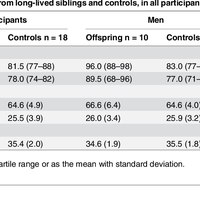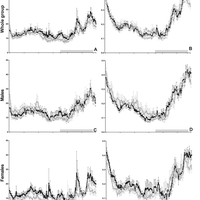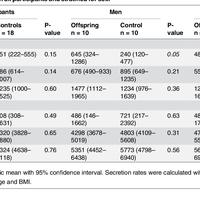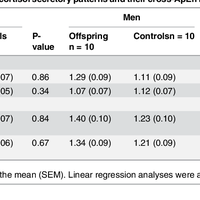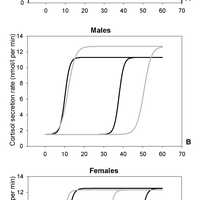Abstract
Objective: The hypothalamic-pituitary-adrenal (HPA)-axis is the most important neuro-endocrine stress response system of our body which is of critical importance for survival. Disturbances in HPA-axis activity have been associated with adverse metabolic and cognitive changes. Humans enriched for longevity have less metabolic and cognitive disturbances and therefore diminished activity of the HPA axis may be a potential candidate mechanism underlying healthy familial longevity. Here, we compared 24-h plasma ACTH and serum cortisol concentration profiles and different aspects of the regulation of the HPA-axis in offspring from long-lived siblings, who are enriched for familial longevity and age-matched controls. Design: Case-control study within the Leiden Longevity study cohort consisting of 20 middle-aged offspring of nonagenarian siblings (offspring) together with 18 partners (controls). Methods: During 24 h, venous blood was sampled every 10 minutes for determination of circulatory ACTH and cortisol concentrations. Deconvolution analysis, cross approximate entropy analysis and ACTH-cortisol-dose response modeling were used to assess, respectively, ACTH and cortisol secretion parameters, feedforward and feedback synchrony and adrenal gland ACTH responsivity. Results: Mean (95% Confidence Interval) basal ACTH secretion was higher in male offspring compared to male controls (645 (324-1286) ngl/L/24 h versus 240 (120-477) ng/L/24 h, P = 0.05). Other ACTH and cortisol secretion parameters did not differ between offspring and controls. In addition, no significant differences in feedforward and feedback synchrony and adrenal gland ACTH responsivity were observed between groups. Conclusions: These results suggest that familial longevity is not associated with major differences in HPA-axis activity under resting conditions, although modest, sex-specific differences may exist between groups that might be clinically relevant.
Figures
Register to see more suggestions
Mendeley helps you to discover research relevant for your work.
Cite
CITATION STYLE
Jansen, S. W., Roelfsema, F., Akintola, A. A., Oei, N. Y., Cobbaert, C. M., Ballieux, B. E., … Van Heemst, D. (2015). Characterization of the hypothalamic-pituitary-adrenal-axis in familial longevity under resting conditions. PLoS ONE, 10(7). https://doi.org/10.1371/journal.pone.0133119

